Ask a communications consultant for advice on effective communication and they’re likely to mention two essential tips: know your message and know your audience.
This advice is fundamental. It’s something I share with students in the science communication course I co-facilitate. But there’s a third and crucial tip that doesn’t get enough attention: know yourself.
There are different approaches to self-understanding. But when it comes to developing an authentic communication style, there are elements about who you are and how you engage with the world that are important to reflect on.
Know your story and how to tell it
One of the questions students often ask me is how to make their scientific research relevant to non-specialists.
I advise them to think about their story — why they do the work that they do, the challenges they face, their hopes and fears for the future — and how they can tell it in a way that communicates the value of their research.
A personal story gives an audience a view into the researcher’s world. By incorporating this human element, scientists can help make often abstract research on global challenges like climate change more relatable to non-specialists. Audiences also tend to remember personal and emotionally compelling stories better than a set of facts.
Knowing and telling your story, or parts of it, is powerful. But it can make you feel vulnerable. Within that vulnerability there is opportunity for deeper connection. Part of knowing yourself involves considering how much you’re willing to share and in which situations.
Know what triggers anxiety and how to deal with it
Standing up in front of a crowd to give a presentation (or doing it online, as is the norm in the Covid-19 era) can induce heart palpitations, even for seasoned speakers. So can doing a media interview.
Being aware of your emotional and physical responses to these situations, and understanding how to manage them, can make you a better communicator.
I have experience with this. I was a journalist for about 10 years and spent a lot of time talking to strangers. I have been running Communicating Science for Impact with Dr Tali Hoffman for over a year. We’ve trained close to 50 researchers from different disciplines and different parts of the world. Despite all this, I still get nervous before facilitating a session of our course.
With the help of a coach, I’ve learned to identify how this affects me and now use a technique for grounding myself.
Before I host a session, I make time to check in with myself. I take five minutes to plant my feet squarely on the ground, close my eyes, and identify what’s going on. I feel my heartbeat racing; notice the tension in my shoulders; observe my thoughts. I take slow deep breaths; soften my posture; and begin to quieten my mind. I bring everything down a notch so I can go into the situation feeling centered and able to operate at my best.
This simple process has been instrumental for me. It might not work for everyone. There are numerous techniques for calming the nerves. The first step is to become aware of how we respond to situations where we’re in the spotlight. We can then use a suitable method to alleviate anxiety.
Know which communication tools work for you
In our digital age there is no shortage of options for communicating with the world. Instead of trying to use all available platforms, it’s good to focus on the tools that best fit with your communication style and objectives.
If you’re a confident speaker, but the thought of being on-camera makes you uneasy, then doing a radio interview or appearing on a podcast would be a good fit. If you prefer writing about your work, try penning a thoughtful op-ed or guest blog.
At the same time, it’s beneficial to push past your boundaries. If a video interview fills you with dread, but you’re ready to get your message out and have identified your method for bringing calm to an uncomfortable situation, go for it. You might be surprised at what happens when you step past the edge of your comfort zone.
Self-reflection at the centre
The tips I mentioned at the beginning of this article — know your message and know your audience — are vital for effective communication.
You need to have a clear idea of what you want to communicate. And you need to know as much as possible about the people you’re communicating with so you can understand what they care about, what their information needs are, and what potential points of connection there are between them and you.
I see the type of reflection involved in knowing yourself as the foundation upon which these two communication principles stand. With a clear awareness of our stories, our emotional triggers, and our preferred methods for interfacing with different audiences, we can grow as confident communicators.
There is no doubt that for effective communication you need to know your message and know your audience. But first, you need to know yourself.

Brendon Bosworth is a communications specialist with a focus on climate change, urbanisation, and sustainable development. He works with global organisations and universities to communicate about the pressing issues of our time.
Brendon runs the science communication course Communicating Science for Impact with Dr Tali Hoffman. He and Tali have trained researchers from the University of Saskatchewan’s School of Environment and Sustainability, the African Climate and Development Initiative (University of Cape Town), the South African Research Chair: Mineral Law in Africa (University of Cape Town), and the ARUA Centre of Excellence in Climate and Development (University of Cape Town, University of Ghana, University of Nairobi).
Learn more about Brendon and his work at www.humanelementcommunications.com Follow Brendon on Twitter.



